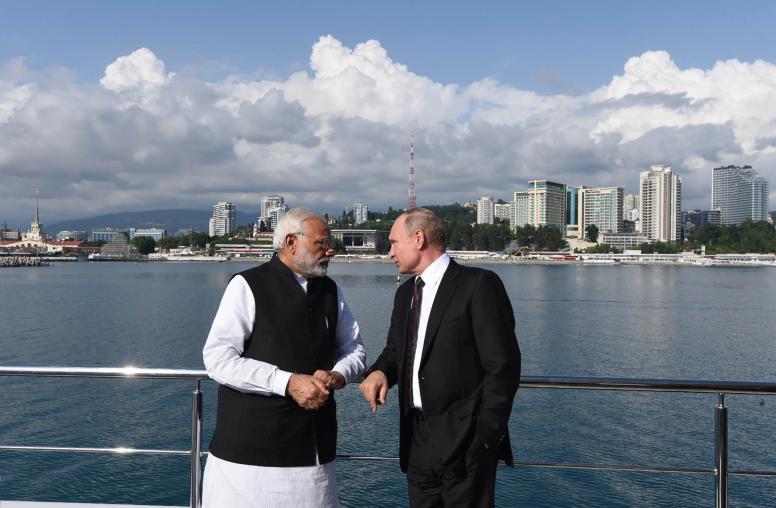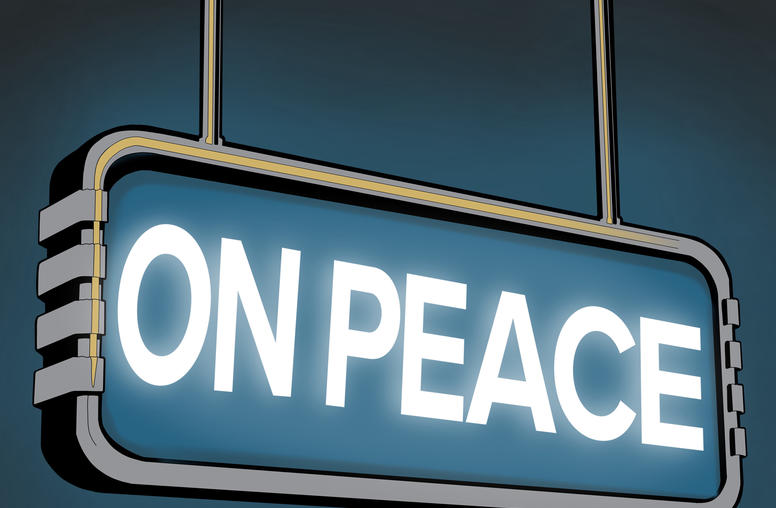It’s Not About Picking Sides: The Nonaligned Movement and Russian Aggression
Nonaligned countries have long been champions of international law. They should condemn Russia’s violations and uphold the rules-based order.
Editor’s Note: The following is the second installment of a two-part series looking at the nonaligned movement amid and after Russia’s war on Ukraine. Part one explored the founding of the nonaligned movement, its relevance in today’s multipolar world and the evolution of the concepts of neutrality and nonalignment.
For nearly 80 years, the world has benefited from the post-World War II international legal prohibitions and norms outlawing aggressive war. While this relative peace and stability was threatened during the Cold War, a group of countries — called the nonaligned movement (NAM) — came together to declare their aversion to the bloc politics of the United States and the Soviet Union. This nonaligned movement championed key principles of the U.N. charter, including respect for territorial integrity, sovereignty and nonaggression. Yet, today many NAM countries — like India, the UAE and many on the African continent — have been reluctant to condemn Russia for its illegal invasion of Ukraine, saying they don’t want to be forced to choose sides amid resurgent great power competition. But this moment calls for the community of nations to uphold international law. It’s not about picking sides — but preserving peace and stability.

Countering Russia’s transformation from a post-imperial empire to an aggressive power trying to dominate its neighbors requires a long-term strategy, with U.N. members states working together to maintain and protect the rules-based international order, argues historian Timothy Garton Ash. His argument focuses on Europe’s role in this effort, but it should extend to all U.N.-member states of the United Nations. After all, they too benefit from the peremptory norm against wars of aggression.
Nonalignment, Neutrality and International Law
Nonaligned countries can look to European “neutrals,” like Switzerland, for models on how to walk the balance between condemning Russia’s aggression without taking sides. Swiss neutrality, Damilola Banjo explains, does not equate to silence or passivity. Switzerland has repeatedly condemned illegal actions by various nations, contributing to the protection and promotion of international law and human rights. Switzerland should continue use its neutral status to foster dialogue and cooperation between nations while also condemning violations of international law. In this new multipolar world, the 119 U.N.-member countries of the NAM can greatly assist European neutrals in leading this principled discourse. Unfortunately, though, many nonaligned countries have abstained from U.N. votes condemning Russia’s actions in Ukraine.
Today, political (as opposed to legal) distinctions between European neutrality and nonalignment are unnecessary, if not irrelevant. The animating spirit of both includes speaking out, taking diplomatic action and seeking to insulate populations against the hazards of great power competition. The history of both also contains a firm political commitment to the most fundamental liberal international norms, such as those that apply to jus ad bellum— the conditions under which states may resort to war.
European neutrality and the NAM both have foundations in firm aspirations for peace. As discussed in part one of this series, the erosion of human rights protections and other international norms is broadly concerning. Moreover, the most important international development in preventing war since 1945 — the absolute prohibition of territorial expansion by force — is now being tested.
In the latter half of the 20th century, acceptance of liberal international principles, particularly those prohibiting territorial expansion by force, grew alongside the expanding U.N. membership of decolonized nations. While legal scholars will always debate the details of customary law, most agree that the deployment of armed force rising to the level of “aggression” is a violation of jus cogens, a peremptory norm, which triggers obligations to act and to which there is no acceptable exemption. Outside of clear designations by the Security Council, the legal definition of aggression remains somewhat ambiguous, but it is safe to say it includes the use of armed force as a means of territorial conquest, such as the case of Russia’s invasions of Ukraine in 2014 and 2022.
It is crucial to unequivocally denounce blatant violations of the most serious international laws, even as debates on the margins of the liberal order continue to refine the evolving "universal" consensus around international norms; meanwhile, it is equally important for the NAM to unite and speak with one leading voice, emphasizing the significance of protecting and upholding these cherished norms for global stability and justice.
An Evolving International Order
The invasion of Ukraine and the ensuing war have come amid an evolving paradigm shift in geopolitics and global security. It followed the U.S. withdrawal from Afghanistan in 2021, which marked a transition away from post-9/11 policies linked to the “Global War on Terror.” Shifting away from a national security focus on transnational terrorism, the United States has invested heavily in addressing the challenges of strategic competition, focusing largely on China with a secondary emphasis on Russia. These policy shifts come amid undeniable changes in global power dynamics, and a U.S. withdrawal from its role as a wide-reaching security guarantor and a diminishing role in multilateral institutions.
This shifting U.S. posture is a significant contributor to the recent diffusion of power worldwide and the rise of a more complex network of state and nonstate interactions in economic, diplomatic, legal, military and sociocultural domains. States are reinterpreting, redefining and, in some cases, abandoning the rules and norms that support global cooperation and peaceful coexistence. As Margaret MacMillan explains, today’s instability resembles the world of the “1910s or the 1930s, when social and economic unrest were widespread and multiple powerful players crowded the international scene, some bent on upending the existing order.”
For example, many nonaligned countries are now using this confrontation between Russia and the West as an opportunity to renegotiate the terms of the emerging multipolar order, which now includes ad hoc bilateral pacts outside of existing multilateral institutions. In recent years, African, Asian, and Latin American members of the NAM have partnered with China as part of development financing alternatives to the multilateral Bretton Woods financing institutions, namely the IMF and World Bank, and other multilateral development banks (MDBs). These MDBs, unlike bilateral pacts with China, embed liberal norms and values into lending and grant programs. For many nonaligned countries, China’s “no- questions-asked” bilateral arrangements are more attractive, as they can be executed expediently without any broader governance or sociocultural implications. On security, NAM members such as the Central African Republic and Mali have forged partnerships with mercenaries linked to the Russian state, like the Wagner group, undermining the U.N.’s peacekeeping architecture.
To be effective, the multilateral institutions that embody liberal norms and values must evolve to respond to today’s distinct challenges. The policies, laws and practices that govern the actions of these institutions and the states within them must also adapt to the international community's demands. That said, the order itself, and the norms so fundamental to its existence, should not be abandoned —particularly by natural champions like the members of the NAM — if we hope to maintain the relative interstate peace that we have enjoyed since 1945.
Conclusion
Russia’s latest invasion of Ukraine and its ensuing consequences have exacerbated several interconnected threats to global stability. The fundamental principles of the U.N. Charter — chief among them the respect for territorial sovereignty — are non-negotiable if the world is to face the challenges of the 21st century. The consequences of abandoning these principles, which have contributed to one of the longest periods of relative peace and stability in modern times, are too alarming to ignore.
As a powerful group of countries, the 119-U.N. members of the NAM are influenced by global trends away from multilateral cooperation within the longstanding laws and norms that constitute the liberal international order. Where possible, the NAM should use the group’s influence within this order to negotiate international frameworks — in areas like climate, sustainable development, tax, technology and finance — in ways that benefit the group and serve to redress historical inequities. That said, the principles of neutrality and nonalignment, as legal and political tools, should not be leveraged to excuse the sacrificing of the values that have helped to protect the world from devastating interstate wars. Since the NAM began in clear and direct opposition to the sort of irresponsible brinkmanship that could lead to a third world war, it should champion sacrosanct international commitments, such as the principles of nonaggression.



